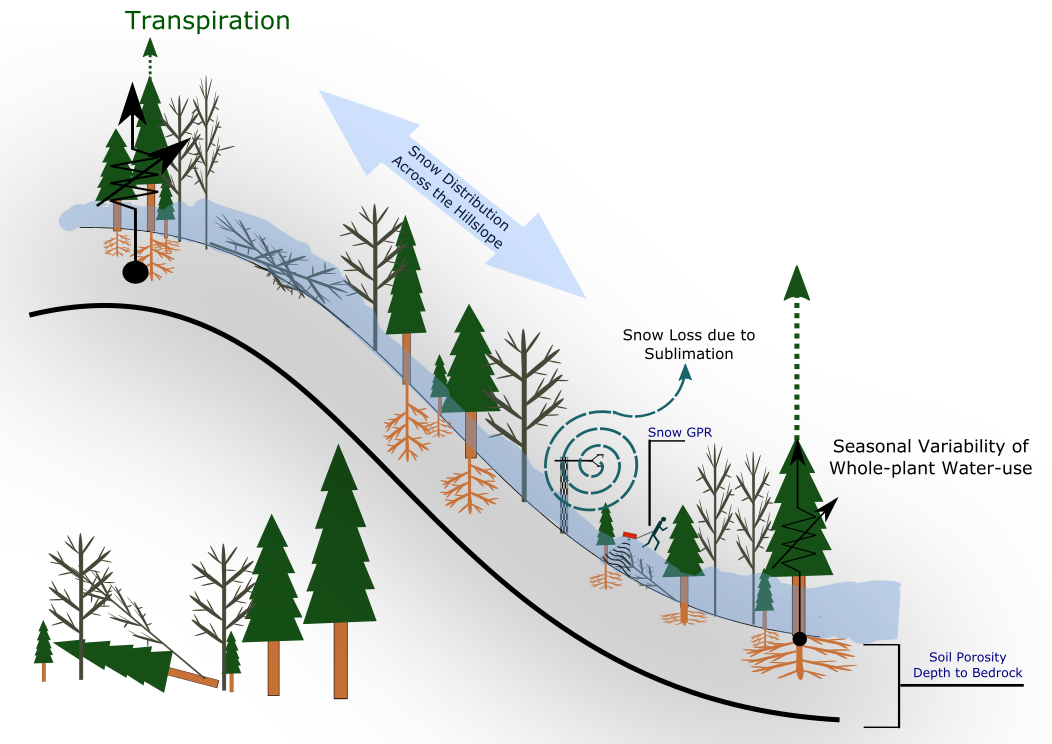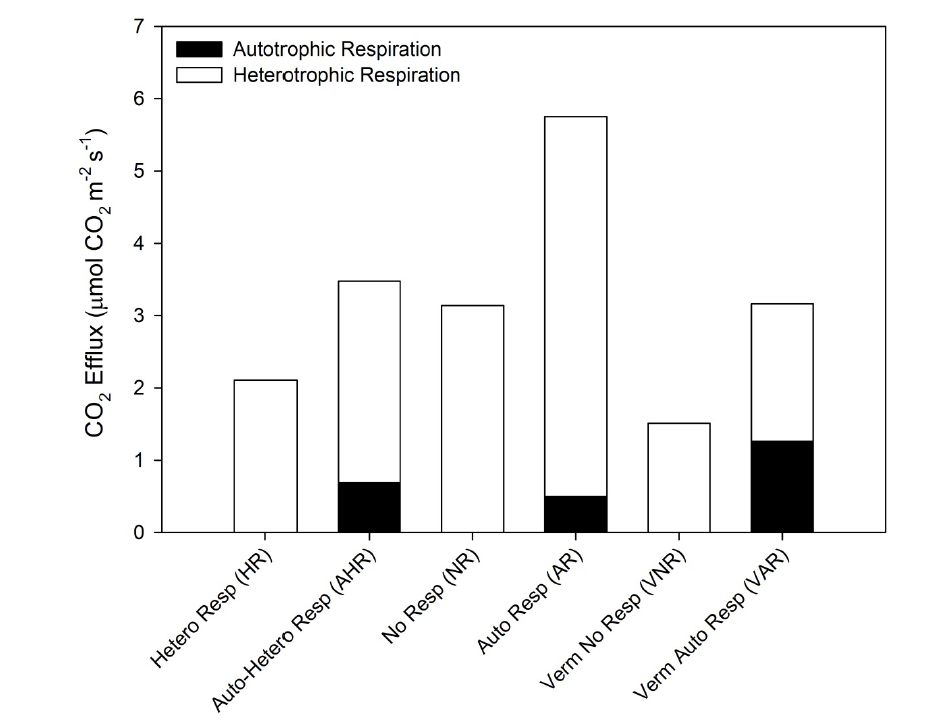Imaging Plant Stress
Drought is a primary abiotic stressor decreasing crop and forest productivity around the world. Novel imaging approaches can improve plant productivity while serving as an early detection tool for detecting plant stress. We have illustrated the power of combining chlorophyll a fluorescence and thermal imaging techniques for predicting drought across crops, forests trees, and desert shrubs.
Hillslope Ecohydrology
Hillslope processes effect vegetation distributions, energy, and hydrological fluxes. We look to quantify energy and hydrological fluxes at variable hillslope positions to increase predictive power for ecological and hydrological fluxes at subalpine and alpine ecosystems.

Dormant Season Soil Respiration
Soil respiration is a complex integration of heterotrophic and autotrophic contributions. Summer soil respiration is dominated by autotrophic root respiration and fungal symbiont respiration. However, dormant season soil respiration is less understood and is mostly derived from heterotrophic decomposition (Beverly and Franklin 2015).
Soil Respiration Following Bark Beetles
Bark beetle infestations have expanded across much western North America in the past couple of decades leading to great timber harvest throughout the Rocky Mountains. Coupled disturbances (i.e., insect infestation and logging) alters biogeochemical cycling by decreasing carbon storage within the forest stands.




